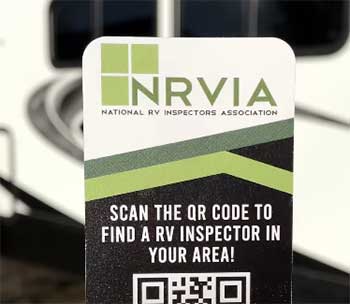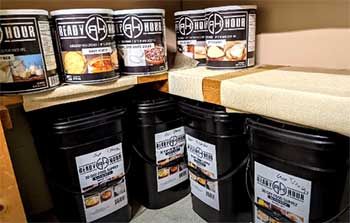If you’re an RV enthusiast, you’ve likely encountered the acronyms NRVTA and RVIA. Both organizations play crucial roles in the RV industry, contributing significantly to the safety, maintenance, and overall experience of recreational vehicle (RV) usage.
In this piece, we delve into the specifics of each organization and examine their advantages and drawbacks.
A Brief Comparison Table
| Attributes | NRVTA | RVIA |
| Purpose | Provides education and certification for RV technicians | Sets safety and construction standards for RVs |
| User Involvement | Direct involvement through education and certification | Indirect involvement through RV safety and quality assurance |
| Accreditation | Certification awarded to individuals | Seal awarded to RVs |
| Fees and Costs | Charges for education and certification | No direct fees to consumers |
| Interaction | Primarily with technicians and prospective technicians | Primarily with RV manufacturers |
| Recognition | Certifications recognized nationwide | Seal recognized and trusted by consumers nationwide |
| Area of Focus | Technical skills and knowledge of RVs | Safety and construction standards for RVs |
NRVTA: A Powerhouse For RV Technicians
The National RV Training Academy (NRVTA), headquartered in Athens, Texas, is a top-tier organization dedicated to educating and certifying RV technicians. Founded by RV industry veterans, NRVTA is at the forefront of RV training.
- Pros of NRVTA

With NRVTA, you gain extensive knowledge about RVs, something particularly beneficial for potential RV owners or service providers. Its intensive courses are a major selling point.
These courses equip you with the technical skills to handle any RV-related task, from basic maintenance to advanced troubleshooting.
NRVTA offers certifications for three different levels: Registered, Certified, and Master Certified RV Technicians.
These credentials are recognized across the country, offering mobility and opportunity for graduates.
- Cons of NRVTA
On the downside, the cost of attending NRVTA can be substantial. Although prices vary depending on the level of certification, some may find this investment hefty.
Another potential drawback is the time commitment required for the training programs.
RVIA: The Gold Standard for RVs
The Recreational Vehicle Industry Association (RVIA), meanwhile, is an authoritative body that sets safety standards for RVs in the United States. An RVIA seal is a mark of quality assurance.
- Pros of RVIA
The RVIA seal indicates that an RV meets rigorous safety and quality standards. It ensures that the manufacturing process adheres to more than 500 safety specifications, providing peace of mind to consumers.
This accreditation is widely recognized, boosting credibility and trust among RV users.
Moreover, the RVIA conducts advocacy efforts, legislative updates, and market research, contributing significantly to the RV industry’s growth.
- Cons of RVIA
Despite its prominence, not all RVs have the RVIA seal. While the majority of manufacturers comply with RVIA standards, it is not a legal requirement.
Consequently, some RVs may not have the seal, which doesn’t necessarily indicate lower quality or safety.
The Key Differences Between NRVTA and RVIA
When looking at NRVTA and RVIA, it’s crucial to understand that these organizations serve two different functions within the RV industry. To shed more light on this, let’s dive deeper into their core differences.
- Focus and Purpose
NRVTA’s main objective is to provide education and certification for RV technicians. Its primary focus is on technical skills, equipping individuals to handle a wide range of RV-related tasks.
On the other hand, RVIA aims to ensure safety and quality in the manufacturing process of RVs. Its role is to provide guidelines and standards that manufacturers should adhere to, thereby ensuring that RVs meet specific safety criteria.
- Affiliation and Accreditation

When an individual graduates from the NRVTA training program, they earn a certification that demonstrates their technical competence in handling RVs.
These certifications are recognized across the country, making NRVTA graduates highly sought after in the job market.
RVIA’s seal, however, applies to the RV itself and not to an individual.
Manufacturers display the RVIA seal to signify that the RV has met all the safety standards set by the association.
- Costs and Fees
The cost structure for both organizations is also different. NRVTA training programs have a set cost, which varies depending on the level of certification pursued. This is a direct payment for education and training services provided.
RVIA, on the other hand, doesn’t charge consumers or RV owners any fees. Manufacturers voluntarily comply with RVIA standards and the costs associated are incorporated into the overall manufacturing process.
- User Involvement
With NRVTA, the user (technician or prospective technician) is directly involved in the process of education and certification. It’s a hands-on experience where skills and knowledge are acquired first-hand.
In contrast, with RVIA, the user is indirectly involved. The association interacts mainly with manufacturers, and the user benefits from the safety and quality standards that these manufacturers adhere to.
Frequently Asked Questions (FAQ)
RVIA certification refers to a seal given to RVs that meet the safety and construction standards set by the RVIA. This certification guarantees that the vehicle has been built according to more than 500 safety specifications, offering consumers a sense of security and trust.
Not all RVs have the RVIA seal. While it is a widely recognized standard, it’s not legally required for RV manufacturers to comply. That said, the majority of RVs sold in the United States bear the RVIA seal, as many consumers consider it a benchmark of safety and quality.
The cost to attend NRVTA varies based on the level of certification you are pursuing. You can expect to spend several hundred to a few thousand dollars on their programs. It’s best to check the NRVTA’s official website for the most accurate and up-to-date pricing information.
The RVIA seal is a mark of assurance, indicating that the RV has been built according to the rigorous safety and construction standards set by the RVIA. It’s a symbol of quality and safety, helping consumers make informed decisions when purchasing an RV.
The Bottom Line
Both NRVTA and RVIA play critical roles in maintaining and elevating the RV industry. NRVTA’s comprehensive training programs and certifications provide excellent education and career opportunities for RV technicians.
On the other hand, RVIA’s safety standards and seal of approval assure consumers about an RV’s quality and safety.

